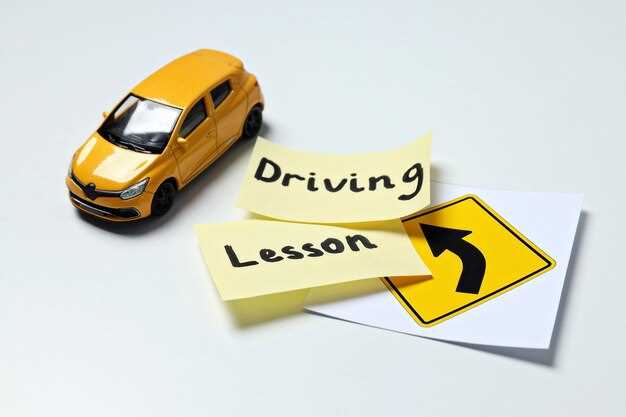
Starting your journey at a driving school can feel as exhilarating as a racing event. The thrill of mastering a vehicle and gaining independence is a significant milestone in anyone’s life. However, it’s essential to prepare yourself mentally and practically for the experience ahead. From understanding your instructor’s expectations to familiarizing yourself with the vehicle controls, knowing what to expect can set you on the path to success.
One of the first things to anticipate is the mix of excitement and nervousness. It’s completely normal to feel a bit overwhelmed as you enter the classroom for the first time. This school environment is designed to help you build the foundational knowledge needed to become a confident driver. You’ll learn about road signs, traffic rules, and essential safety protocols before even getting behind the wheel.
Equipping yourself with tips from experienced drivers can greatly enhance your learning experience. For instance, practicing relaxation techniques and visualization can help ease anxiety. Additionally, it’s beneficial to make the most of your time in the car: listen carefully to your instructor, ask questions, and remember that every practice session is a step closer to becoming a skilled driver.
First Driving School Experience: What to Anticipate
Starting your journey at a driving school can be both exciting and nerve-wracking for beginners. Understanding what to expect can help alleviate some of that anxiety. Here are some essential tips to ensure a smooth experience.
First, familiarize yourself with the basic rules of the road before your first lesson. Knowing traffic signals, road signs, and basic driving etiquette will give you confidence. Most schools will start with a theory session, so pay attention and ask questions if you’re unsure about anything.
During your practical sessions, remember that every driver was once a beginner. It’s normal to feel awkward or clumsy at first. Focus on gaining control of the vehicle and understanding how it responds. Practice maneuvers like turning, parking, and gear shifting as these skills are crucial for safe driving.
Learn how to handle different driving conditions. Your instructor may take you through various environments, including city streets, highways, and rural roads. This exposure is valuable to becoming a well-rounded driver. Don’t hesitate to express any areas where you feel less comfortable.
It’s essential to maintain a calm mindset, even if you make mistakes. Think of your training as a racing game, where practice is the key to improvement. The more you drive, the easier it will become. Your instructor is there to guide you, so take their advice seriously.
Finally, social interactions with fellow students can enhance your learning experience. Discussing each other’s progress, sharing tips, and even forming study groups can provide support and motivation. Remember, driving is not just about mastering a vehicle; it’s about building confidence and developing a responsible attitude on the road.
Understanding the Structure of Your First Lesson
Your first driving school experience will likely begin with an introduction to the classroom setting. This portion usually covers essential information about the vehicle, traffic rules, and safe driving practices, tailored specifically for beginners. Here, instructors will emphasize the importance of understanding your surroundings and the fundamentals of operating a vehicle.
Once the theoretical part is complete, you will transition to the practical segment. This is where the excitement builds, especially for those who dream of racing through the streets one day. During this phase, instructors will guide you through basic vehicle operations, such as adjusting mirrors, using the accelerator, and understanding brake functions. Expect to practice starting the engine, steering, and making simple maneuvers in a controlled environment.
Additionally, your first lesson may include getting familiar with the controls inside the car, such as turn signals, headlights, and windshield wipers. These components are crucial for ensuring a safe driving experience. Instructors will offer tips on how to remain calm and focused while driving, preparing you for the challenges that lie ahead.
The lesson will likely conclude with a brief review of what you have learned. Instructors will encourage you to ask questions and express any concerns regarding your performance. Feedback is essential in a beginner’s journey, and understanding your strengths and areas for improvement sets the stage for future lessons in your driving school experience.
Essential Documents and Requirements for Enrollment
Enrolling in a driving school requires careful preparation to ensure a smooth start to your racing journey. Before signing up, gather essential documents and meet specific requirements.
First and foremost, you will need to provide a valid form of identification. This could be a driver’s license, state ID, or any official government-issued identification. Check if your chosen school requires a specific type of ID.
Next, proof of residency may be a necessity. This document should confirm your current address and can include utility bills or bank statements. Typically, driving schools prefer that students reside in the area they serve.
Age requirements are another critical factor. Most driving schools accept students as young as 15 or 16 years old for basic courses. Some schools may have age restrictions for advanced racing courses, so be sure to confirm eligibility with the institution.
If applicable, parental consent forms become crucial for underage students. Parents or guardians might need to sign legal documents for their child to participate in lessons or racing. Ensure these forms are complete and submitted on time.
Prior to enrollment, be ready to pay registration fees. This typically covers administrative costs and materials needed for the course. Inquire about payment methods accepted by the school.
Always check for any additional requirements unique to your selected driving school. This might include completion of a pre-course questionnaire or an introductory session. Following these tips will help you prepare effectively for your first experience in driving school and set you on the path to becoming a skilled driver.
Tips for Overcoming Nervousness Before Driving
Feeling nervous before your first driving lesson at school is completely normal, especially for beginners. To help you manage that anxiety, consider these practical tips.
Firstly, practice deep breathing techniques. Before getting into the car, take a moment to inhale deeply through your nose, hold for a few seconds, and exhale slowly through your mouth. This can help calm your racing heart and clear your mind.
Familiarize yourself with the vehicle. Spend some time sitting in the car, exploring the controls, and understanding how everything works. Knowing the layout of the vehicle can alleviate concerns and increase your confidence.
Visualize your success. Picture yourself driving smoothly and confidently. Visualization is a powerful tool that can reduce anxiety and prepare your mind for a positive experience.
Focus on the basics of driving. Remind yourself that this is a learning process. Concentrate on simple tasks like steering, braking, and signaling. Break down each action into manageable steps to avoid feeling overwhelmed.
Choose a calming playlist. If your driving school allows music, pick songs that help you relax. Familiar, soothing tunes can help create a more comfortable atmosphere during your lesson.
Talk with your instructor before starting. Express your concerns and ask questions. A supportive instructor will help you feel more secure and provide reassurance, making the experience less intimidating.
Finally, remember that everyone starts somewhere. No one is born a perfect driver. Embrace your status as a beginner, and focus on learning rather than racing to be the best. Celebrate small victories along the way to build your confidence.
Basic Driving Techniques Every Beginner Should Know

Learning to drive can be an exciting yet challenging experience for beginners. Mastering fundamental techniques is essential for building confidence on the road and ensuring safety. Here are some basic driving techniques that every newbie should consider:
- Understanding Controls:
Familiarize yourself with all the controls in the vehicle, including the steering wheel, pedals (accelerator, brake, and clutch), gear shift, turn signals, and windshield wipers. Knowing how to operate these controls is vital for effective driving.
- Proper Seating Position:
Your seat position greatly affects your ability to control the vehicle. Adjust the seat so that you can comfortably reach the pedals while keeping a good view of the road ahead. Your back should be straight, and arms slightly bent when gripping the wheel.
- Mastering Acceleration and Braking:
Begin practicing smooth acceleration and braking. Press the accelerator gently to increase speed and ease off the brake gradually to slow down or stop. Avoid sudden movements to promote smoother journeys and better control.
- Steering Techniques:
- Use the ‘ten and two’ hand position on the steering wheel for better control.
- Practice smooth and gradual turns, using your eyes to look ahead in the direction you want to go.
- Learn to use pull-push steering for sharper turns, especially in parking situations.
- Safe Following Distance:
Maintaining a safe distance from the vehicle ahead is crucial. A good rule of thumb is to keep a three-second gap under normal conditions. This distance allows you enough time to react in case of sudden stops.
- Using Mirrors:
Regularly check your mirrors to stay aware of your surroundings. Adjust your rearview and side mirrors before you start driving to eliminate blind spots. Always glance at your mirrors before changing lanes or making any maneuvers.
- Simple Defensive Driving Tips:
Be aware of other drivers and anticipate their actions. Avoid distractions inside the car, such as using your phone. Always signal your intentions when changing lanes or turning.
As a beginner, it’s vital to practice these techniques consistently. With time and experience, driving will become more intuitive. Remember that patience and focus are key, especially if you dream of racing someday.
Exploring the Benefits of Racing School for Enthusiasts

For beginners passionate about motorsports, attending a racing school can provide invaluable skills and knowledge. Such schools are designed not only to refine driving techniques but also to enhance overall road safety, making them a worthwhile investment for any aspiring racer.
One of the primary benefits of racing school is the opportunity to learn from professionals. Expert instructors offer insights into the nuances of high-performance driving, including handling dynamics, cornering techniques, and proper braking methods. These lessons are crucial for beginners aiming to improve their driving abilities.
Additionally, racing school provides a controlled environment for practice. Unlike regular driving, participants can test their limits in a safe setting, minimizing risks associated with high-speed driving on public roads.
| Benefit | Description |
|---|---|
| Professional Instruction | Guidance from experienced racers and instructors enhances learning. |
| Safety Awareness | Focus on safety and emergency response techniques is emphasized. |
| Skill Development | Advanced driving skills are cultivated through practical exercises. |
| Networking Opportunities | Connect with fellow enthusiasts and industry professionals. |
| Performance Insight | Understanding vehicle dynamics leads to better racing performance. |
In conclusion, for beginners eager to delve into racing, enrolling in a racing school can significantly enhance driving skills, build confidence, and foster connections within the racing community. These experiences lay a solid foundation for anyone looking to pursue motorsport more seriously.
How to Choose the Right Driving School for Your Needs
Choosing the right driving school is crucial for beginners embarking on their driving journey. Start by identifying your specific needs. If you’re looking to master basic skills, seek schools that specialize in teaching novice drivers. Consider the curriculum offered; a comprehensive program should cover essential topics such as road rules, safe driving practices, and hands-on experience.
Next, evaluate the qualifications of the instructors. Qualified instructors with a strong background in teaching and a good rapport with students can enhance the learning experience. Look for schools that have instructors with experience in both ordinary driving and racing, if that piques your interest. An instructor who has a diverse driving background can provide insights that go beyond standard driving practices.
Location and availability are also important factors. Choose a driving school that is conveniently located and offers flexible scheduling to accommodate your lifestyle. Some schools may provide online learning options coupled with in-car lessons, which can be beneficial for beginners who need more time to absorb theoretical knowledge.
Cost is another consideration. While you should aim for quality instruction, it’s important to find a school that fits your budget. Be aware of any hidden fees and ensure you understand what is included in the package price. Look for driving schools that offer transparent pricing structures without unexpected charges.
Finally, research reviews and testimonials from past students. Positive feedback can indicate a school’s reputation and effectiveness. Don’t hesitate to ask for recommendations from friends or family who have gone through similar experiences. By considering these factors, you can increase your chances of selecting a driving school that meets your needs and sets you up for success on the road.




